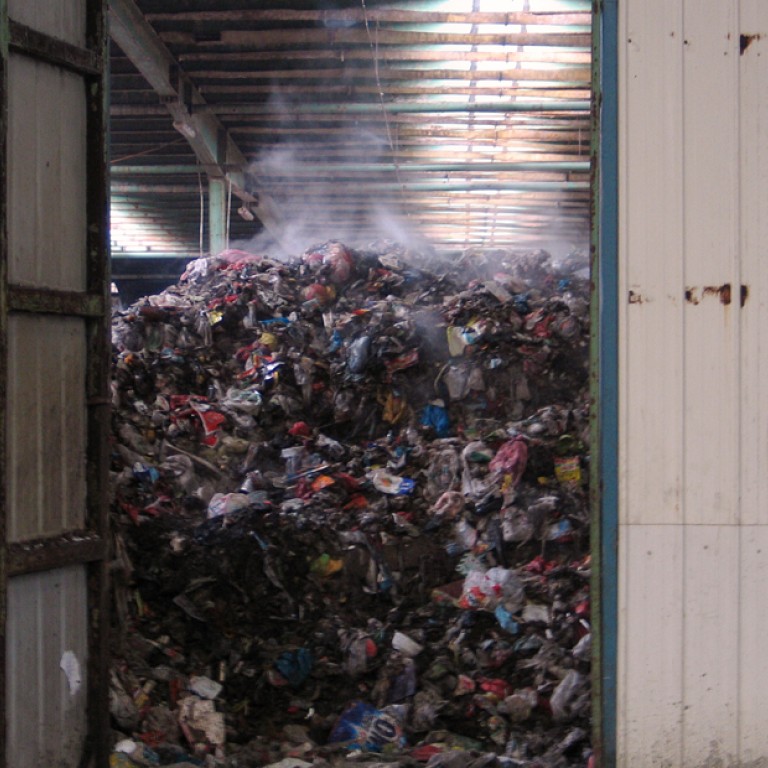
Education is the best weapon in fighting public apathy over recycling
Efforts to engage households in recycling should start with teaching how to sort out the trash
When the Shanghai Greenery and Urban Management Bureau announced last week it would launch another effort get households to sort their rubbish, residents took little notice.
They have shown little interest in recycling initiatives in the past, apparently content for officials to deal with the 7.36 million tonnes of waste that the city’s households generate every year.
But that blissful disregard will soon be tested. The city’s household waste has risen at an annual rate of 3.4 per cent over the past decade. The city’s three landfills have already reached their intended capacity and there is little chance space can be found for new ones.
One solution is to construct more waste incinerators – the city has four already – but any plan for a new facility is almost certain to trigger strong opposition from residents. They are wary of government assurances the plant’s emissions would be safely managed. Their scepticism is justified – one only has to consider the Lanzhou tap water contamination that dominated the week’s news.
The city already has special bins in some public spaces, such as parks or subway stations. One is labelled “recyclable rubbish” and the other “non-recyclable”. But few know which rubbish goes into the right bin.
The same confusion or apathy is witnessed in residential areas. The two-bin programme currently covers about 2.05 million households, about a quarter of Shanghai’s total. But, again, people consistently fail to divide their rubbish or they ignore the bins altogether. Some residents ask why they should bother at all when the cleaners who empty the bins are seen simply throwing everything together before carting it away.
The latest scheme launches next month, and will be rolled out gradually across the city. Although few details have been made public, the programme might begin with requiring all government departments, state-owned enterprises or public institutions to follow the guidelines, with new residential areas to follow, and finally, older residential blocks.
Lu Yuexing, the bureau’s director, said it was considering co-operating with certain supermarkets, shops and banks, to come up with incentives to comply such as coupons. People or companies who ignore the scheme will be sent educational materials.
Lu is a realist, and admits people generally ignore recycling efforts, but part of the blame rests with the municipal authorities. It refuses to make the issue a priority.
Lu’s bureau lacks any real power to enforce the new guidelines or objectives, and receives relatively meagre funding from the city.
The scheme will require bins with labels for “recyclable garbage”, “toxic garbage”, “wet garbage” and “dry garbage; workers to monitor the sorting in the initial stage of the programme; additional trucks equipped to handle the collection; and educational materials for the public.
Lessons on why recycling is important and how to sort items should be taught to children in schools at an early age and continued through to middle school.
But the city authorities have shown little interest in changing thinking on recycling. A recent pubic awareness campaign on healthy living, in contrast, has largely been viewed as a huge success. People have received booklets and small items, such as fridge magnets reminding them which types of food should be eaten in moderation, and small tape measures to keep track of their waistlines.
Additional incinerators could help manage the rising tide of household waste, and turn the rubbish into energy. The US for example has 86 facilities for combustion of municipal solid waste, and they handle about 28 million tonnes a year, according to the American Environmental Protection Agency. The facilities produce a total of 2,720 megawatts of power annually, enough to power 2 million homes.
According to the Shanghai greenery bureau, nearly half of the city’s household waste is burned.
The approach is controversial. In the middle of 2012, hundreds of residents of Songjiang district rallied at a major square to protest against a new incinerating plant to be built near their community.
Protestors said they had little faith in the proposed facility’s processing technology that would remove toxic or hazardous waste before it was incinerated. Given residents’ habit of lumping all trash together, dangerous emissions were inevitable, they argued.
The easiest, cheapest solution is better education on sorting rubbish and better support for recycling programmes. This will cost far less than the hundreds of millions of yuan required for additional incinerators.

